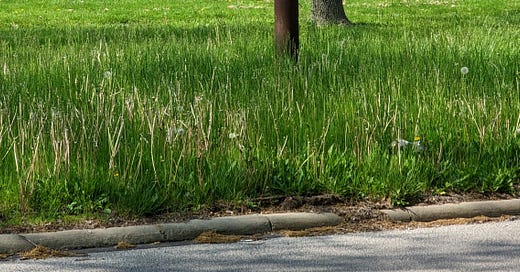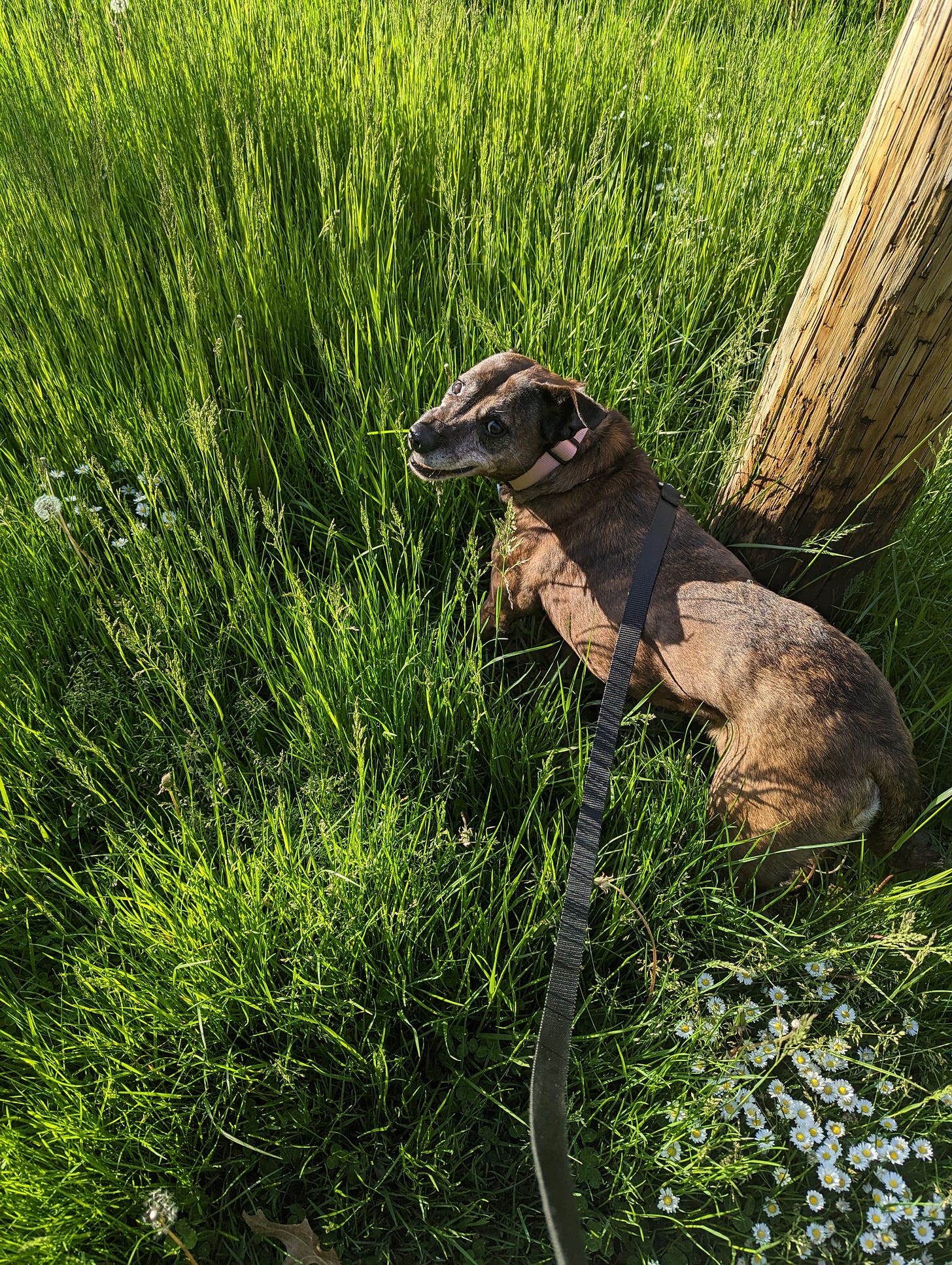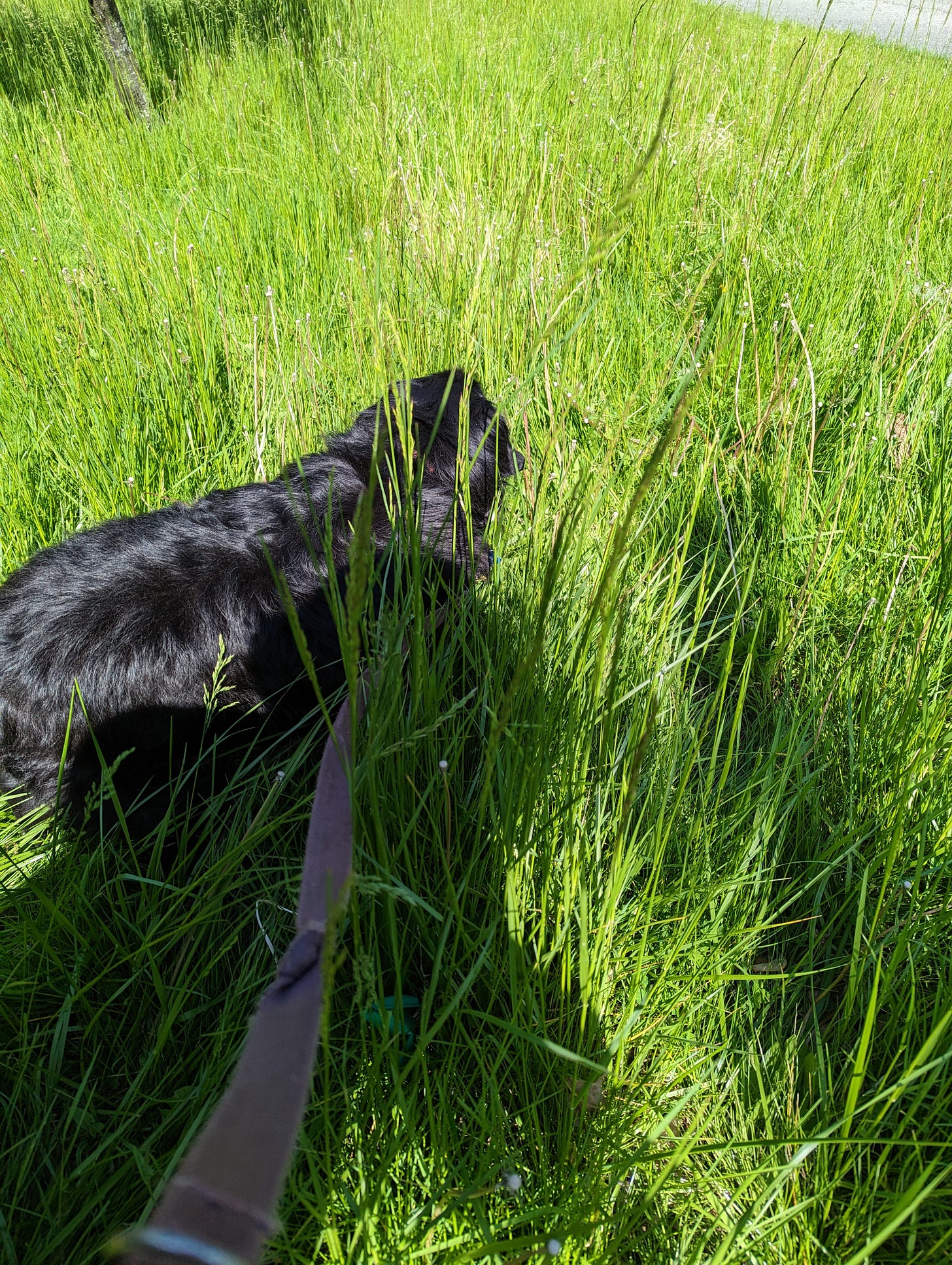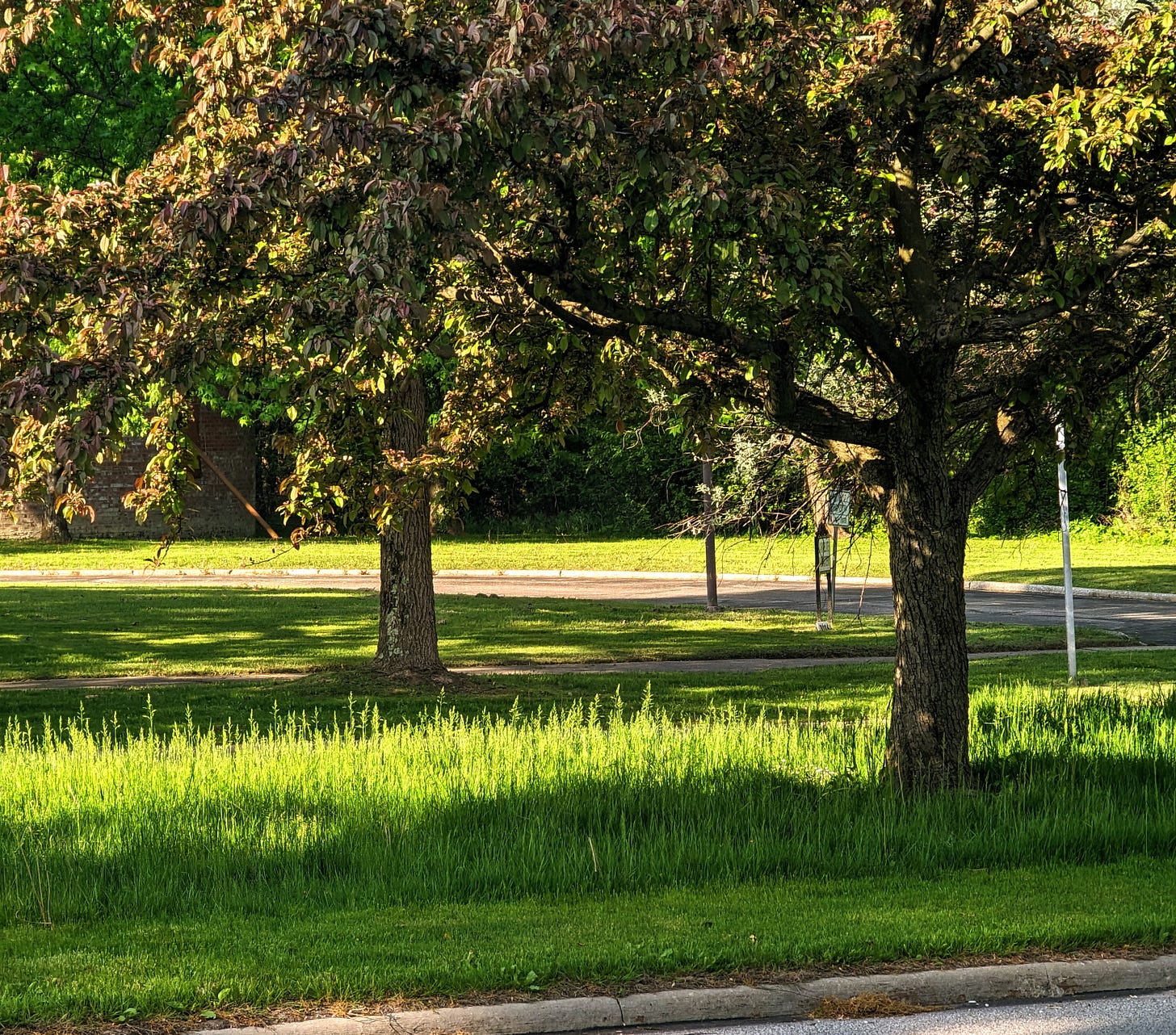The grass on the median looked particularly high a couple of weeks ago. “Almost time for my annual email to the city about the importance of keeping the median neat for residents and passers-by,” this Karen thought.
Before the email could be composed (with eloquence and conviction, of course), interesting information emerged from the city.
This month, the City…is participating in No Mow May. Through the month of May, except in the cases of a clear health or safety concern, enforcement activities related to…violations for tall grass will be suspended.
The City will also restrict mowing on public properties and roadway medians to only those instances where a health and safety concern must be addressed, such as mowing a visibility strip around the perimeter of a median to ensure a safer driving environment.
The goal of No Mow May is to help insect pollinators, such as butterflies and bees. By allowing dandelions and wildflowers to grow, instead of mowing them down, we can provide hungry pollinators with much-needed food.
“Time to adjust my email to the city,” Karen decided, and immediately began writing.
Dear Mayor:
I am very concerned about what our boulevard will look like by the end of May. Please reconsider this unnecessary promotion. This article is very helpful in understanding how to take care of lawns while also caring for nature.
https://apnews.com/article/gardening-no-mow-may-lawns-6aa1669b9e9bb5b5d8ea671c44d186f2
(Note article attached to show this wasn’t based solely on feelings.)
No word back from the mayor. But a firestorm quickly developed on the local Next-door platform. Comments ranged from “This is the stupidest thing I’ve ever heard of” to “If there’s a chance this will help the planet, I’m all for it.”
One commenter lamented that the people who oppose No Mow May will be sad when they can no longer get almond milk for their coffee because the bees have vanished. Another said No Mow May was going to make him cut his lawn even more.
For the most part, comments were civil, but in the end, both sides were frustrated. Why can’t this person see that not mowing the lawn for a month is a bad idea? Why can’t my neighbor realize that we need to do this to help the pollinators?
What Even Is No Mow May?
The concept of No Mow May began in the United Kingdom in 2019 to help revive native wildflowers that had been diminishing for many years. Following No Mow May in 2022, British scientists recorded a proliferation of important wildflowers and plants, including daisies, creeping buttercup, yellow rattle, field forget-me-not, meadow buttercup, white clover and dandelion. Advocates for No Mow May have noted the benefits for plants, wildlife and the environment when lawnmowers remain idle for a month.
No Mow May gradually made its way across the Atlantic to Appleton, Wisconsin, which held its first event in 2020. This year, about 70 towns in the United States are said to be taking part in No Mow May.
Daisy is rather enjoying No Mow May. This is on the median across from her house.
The Downside of No Mow May
While filled with good intentions, No Mow May nevertheless has its detractors. Jessica Damiano, a reporter with the Associated Press, charged that “some of those pollinators you set out to protect will likely get shredded up with the first mow of the season. Grass will no doubt get shaded by tall weeds, which can lead to fungal diseases. And weeds and invasive plants that take hold during the month won’t simply disappear once the mowing commences. That might lead people to apply chemical pesticides they wouldn’t otherwise use.”
To back up her claims, Damiano spoke with Tamson Yeh, a turf specialist with the Cornell Cooperative Extension of Suffolk County in New York, who said that letting the grass grow for one month and then cutting it down was “counterproductive.”
“Bees tell each other where the food is, and pollinators (when they discover an unmown lawn) will remember to come back to it again and again,” Yeh said. “Then on June 1st, when the food disappears, it’s not good for them.”
Then there’s the potential safety hazards of overgrown lawns. Ticks love shady, brushy areas. Snakes and rodents do, too. In public areas such as medians, tall weeds and wildflowers can block a driver’s view.
Finally, if not properly planned, No Mow May can result in unkempt landscapes. In this city, with its architecturally striking homes dating back to the early 20th century, weeds and tall grass spoil the curb appeal.
Almost lost Comet on a walk.
There’s a Better Way
Instead of No Mow May, researches at the University of Minnesota suggest people practice Slow Mow Summer, infrequently cutting their lawns from May through September so that pollinators have food throughout the season.
Yeh recommends a year-round approach to protecting wildlife. Replacing parts of a lawn with native plants or a wildflower meadow ensures food and shelter for bees and birds for much of spring and summer. Keeping fall leaves on the ground instead of raking them gives pollinators a safe place to lay their eggs and hibernate until spring.
No Mow May as a Symbol of Divisiveness
The brouhaha over No Mow May in this city represents the hard lines that have been drawn in so many aspects of our lives. Each side assumes that the other side will either be in total agreement or will be silenced by the blustering noises of what it deems to be right and true.
Those in favor of No Mow May see the people against it as bee-haters and climate-deniers, while the anti-No Mow May crowd views the opposition as climate-alarmists who would rather have an unsightly lawn if it means a few pollinators will thrive. That sounds harsh, but it’s how the conversations can gradually devolve. Thank heavens for the people in the middle of the controversy, who busily read articles and ask experts before voicing their opinions. They are the key to civil discourse on this and other subjects.
Finding middle ground shouldn’t be that hard. Thankfully, our city realizes that. A couple of weeks into No Mow May, Karen looked out her living room window to find the median had been given a mohawk. (See below.) The tall grass was cut around the perimeter of the median, while grass, dandelions, weeds and wildflowers soared in the middle. Now drivers could see where they were going, and bees and butterflies had a safe haven. It’s not a perfect solution, but it’ll do.









Love the mohawk grass look-that’s a great idea! We need to search information and find common ground for almost everything. I am all for bees, but I don’t want the ticks, so... there is something in the middle like you found out. Thanks!
The positive aspect of the to mow or not to mow question is that it brings public attention to the need to protect wildlife and pollinators. Hopefully, the issue will result in creative evidence-based community policies and not emotional “We’ve got to do something!” reactions.